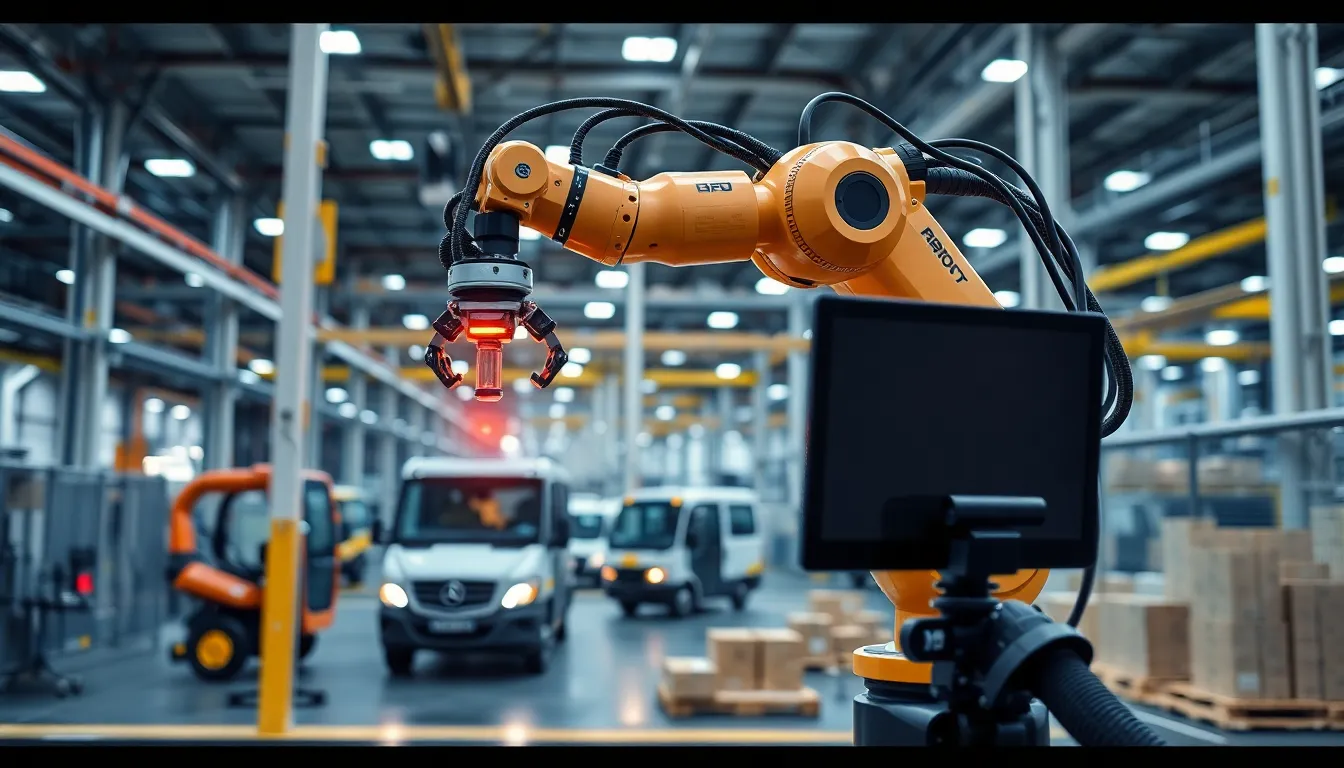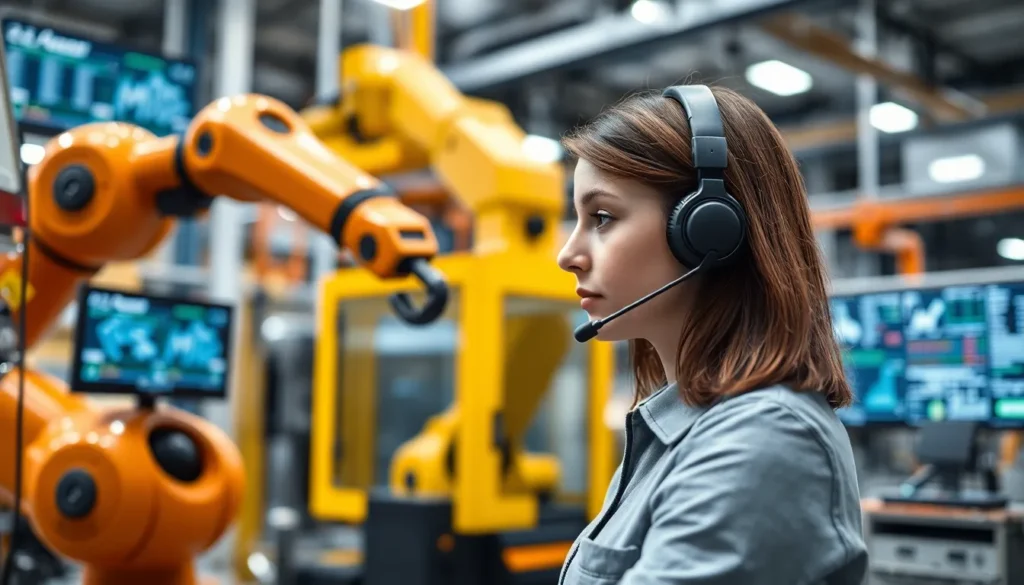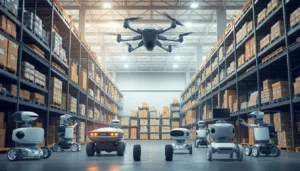In an era where technology connects us like never before, remote robotics stands at the forefront of innovation. These advanced machines are revolutionizing industries by enabling operators to control devices from miles away, transforming how tasks are performed in hazardous environments. From mining and agriculture to healthcare and disaster response, the applications are vast and promising.
As the demand for efficiency and safety grows, remote robotics offers solutions that minimize human risk while maximizing productivity. This technology not only enhances operational capabilities but also paves the way for future advancements in automation and artificial intelligence. With the potential to reshape entire sectors, understanding remote robotics is essential for anyone looking to stay ahead in the rapidly evolving tech landscape.
Table of Contents
ToggleOverview of Remote Robotics
Remote robotics encompasses technologies enabling operators to control robotic systems from a distance. These systems operate in various industries, including manufacturing, healthcare, and exploration. By integrating sensors, cameras, and control systems, remote robotics enhances precision and flexibility in tasks.
Operators use remote robotics to access environments that may pose risks. Examples include military operations, disaster response, and deep-sea exploration. This capability significantly reduces human exposure to dangerous conditions.
The advancement of 5G connectivity amplifies the effectiveness of remote robotics. Enhanced bandwidth and low latency enable real-time communication between operators and machines. Technologies like artificial intelligence contribute to smarter decision-making, allowing systems to adapt to dynamic situations.
Demand for remote robotics continues to grow due to its efficiency and safety benefits. Companies increasingly adopt these systems to improve productivity, reduce operational costs, and ensure safety in hazardous areas. Understanding remote robotics enables individuals and organizations to stay competitive in a tech-driven market.
Applications of Remote Robotics

Remote robotics significantly impacts various industries by enhancing efficiency, safety, and precision. Here are some key applications across different sectors.
Industrial Use Cases
Remote robotics plays a critical role in manufacturing and logistics. Operators control robotic arms and automated vehicles from distant locations. Examples include assembly line automation, where robots handle repetitive tasks, and automated guided vehicles (AGVs) that transport materials. Increased productivity and reduced labor costs drive companies to implement these technologies.
Medical Robotics
In healthcare, remote robotics transforms patient care and surgical procedures. Surgeons operate robotic systems from remote locations during minimally invasive surgeries, improving accuracy and patient outcomes. Telepresence robots also enable healthcare professionals to consult with patients in underserved areas. These advancements increase access to quality care while minimizing physical contact.
Exploration and Surveillance
Remote robotics proves invaluable in exploration and surveillance missions. In deep-sea research, remotely operated vehicles (ROVs) collect data in extreme environments without risking human lives. Similarly, drone technology facilitates aerial surveillance for security and environmental monitoring. These applications enable researchers and authorities to gather crucial information safely and efficiently.
Technologies Behind Remote Robotics
Remote robotics relies on advanced technologies to ensure efficient and precise operations from a distance. Key components include control systems and communication technologies.
Control Systems
Control systems play a crucial role in enabling operators to manipulate robotic devices remotely. These systems utilize algorithms and software tools to translate user commands into precise movements. Examples of control systems include:
- Joysticks and Game Controllers: These input devices allow intuitive control of robotic actions, offering haptic feedback to enhance user experience.
- Motion Capture Systems: These systems track user movements and translate them into real-time robotic actions, ensuring accurate replication of intended motions.
- Programmable Logic Controllers (PLCs): Commonly used in industrial applications, PLCs automate control tasks through pre-defined sequences, improving consistency and efficiency.
Control systems also incorporate feedback mechanisms that monitor the robot’s actions, enabling adjustments and enhancing overall precision during tasks.
Communication Technologies
Communication technologies are vital for ensuring seamless interaction between operators and robotic systems. These technologies facilitate real-time data exchange and control commands. Major communication technologies include:
- 5G Networks: Enhanced bandwidth and lower latency provided by 5G networks enable real-time operation, critical for high-stakes environments like healthcare and military applications.
- Wi-Fi and Mesh Networks: These networks facilitate reliable communication across various ranges, allowing operators to manage multiple robotic units simultaneously.
- Satellite Communication: Utilizing satellites ensures connectivity in remote or inaccessible locations, expanding the operational range of remote robotics for applications like deep-sea exploration.
These communication technologies ensure that remote robotics operates efficiently and effectively, enhancing overall performance while minimizing delays and errors.
Benefits of Remote Robotics
Remote robotics offers significant advantages across various sectors, primarily focusing on efficiency and safety enhancements. The integration of remote robotics technology transforms operations, ensuring improved outcomes in challenging environments.
Increased Efficiency
Increased efficiency is a primary benefit of remote robotics. Automation through robotic systems streamlines processes, reducing time and labor costs. For example, in manufacturing, robotic arms execute tasks with high precision, leading to faster production rates. Additionally, remote-controlled vehicles optimize logistics by facilitating 24/7 operations without requiring human presence. Organizations can monitor and manage multiple robotic systems simultaneously, further maximizing resource utilization.
Enhanced Safety
Enhanced safety represents another critical advantage of remote robotics. By enabling operators to control equipment from a safe distance, the technology significantly reduces human exposure to hazardous environments. For instance, in disaster response, remote-controlled drones conduct search and rescue missions in areas unsafe for personnel. In the healthcare sector, surgeons utilize remote robotic systems to perform surgeries, minimizing risks associated with traditional approaches. As safety remains a top priority for organizations, the implementation of remote robotics demonstrates a commitment to protecting workers while maintaining operational effectiveness.
Challenges in Remote Robotics
Remote robotics faces several notable challenges that hinder its full potential. These challenges encompass technical limitations and ethical considerations, both of which impact the effectiveness and adoption of this emerging technology.
Technical Limitations
Technical limitations represent a significant barrier in remote robotics implementation. The following aspects illustrate these constraints:
- Latency Issues: Latency in communication can disrupt real-time control, particularly in high-stakes environments. Reactive tasks may suffer if the delay extends beyond acceptable limits.
- Signal Interference: Environmental factors, such as physical obstructions and electrical interference, can disrupt communication signals between operators and robotic systems, impacting performance reliability.
- Power Supply: Limited battery life restricts operational duration for mobile robotic platforms, creating challenges for missions that require extended timeframes in the field.
The evolving nature of technology aims to address these issues, although current limitations continue to pose obstacles.
Ethical Considerations
Ethical considerations also play a critical role in the deployment of remote robotics. The following points highlight key concerns:
- Privacy Concerns: The ability to monitor individuals and environments raises significant privacy issues. Deployment in public spaces may lead to unauthorized surveillance, requiring strict governance.
- Job Displacement: Automation through remote robotics may lead to workforce reductions in certain sectors. This displacement creates socio-economic implications that necessitate proactive management and retraining efforts.
- Decision-Making Responsibility: The question of accountability arises when robotic systems make autonomous decisions, especially in life-or-death situations. Determining liability in the event of failure remains a complex ethical dilemma.
Balancing technological advancement with ethical implications remains crucial for wider acceptance and responsible use of remote robotics.
Future Trends in Remote Robotics
Innovations in remote robotics are set to redefine multiple industries. Advancements in artificial intelligence (AI) empower robotics with enhanced decision-making capabilities. Robotics integrated with AI can analyze data, predict outcomes, and autonomously adapt to changing environments, driving efficiency.
The growth of 5G technology significantly impacts remote robotics. 5G networks support high-speed data transmission with low latency. These networks enable real-time control and monitoring of robotic systems, improving responsiveness, particularly in critical operations such as medical procedures and emergency responses.
In manufacturing, collaborative robots (cobots) are emerging as a vital trend. Cobots work alongside human operators, combining the strengths of both to optimize productivity. Integration of remote control features allows operators to oversee machines from a distance, ensuring safety and reducing downtime.
Another significant trend is the expansion of telepresence robots. Telepresence robots provide remote users with a physical presence in various settings, enhancing communication and interaction in healthcare, education, and corporate environments. They enable expert consultations in real-time, improving access to specialized services.
Additionally, remote robotics increasingly incorporates advanced sensors and machine learning algorithms. Enhanced sensors improve environmental awareness and object recognition. Machine learning algorithms enable robots to learn from experiences, resulting in smarter, more autonomous operations.
Investment in remote robotic systems continues to grow. As industries recognize the potential for cost savings and increased safety, demand for sophisticated remote robotics solutions rises. Companies are adopting these technologies to enhance operations and gain competitive advantages.
Overall, the future of remote robotics focuses on greater autonomy, enhanced connectivity, and increased integration across various sectors. These trends promise to streamline processes, improve safety, and create innovative solutions to complex challenges.
Remote robotics is reshaping industries by enhancing safety and efficiency. As technology continues to evolve the integration of AI and 5G connectivity will further optimize operations. Organizations adopting these systems can expect significant improvements in productivity and cost-effectiveness.
However addressing the challenges and ethical implications is essential for responsible implementation. The future of remote robotics holds immense potential with innovations poised to redefine how tasks are performed across various sectors. Embracing this technology is vital for staying competitive in an increasingly automated world.










